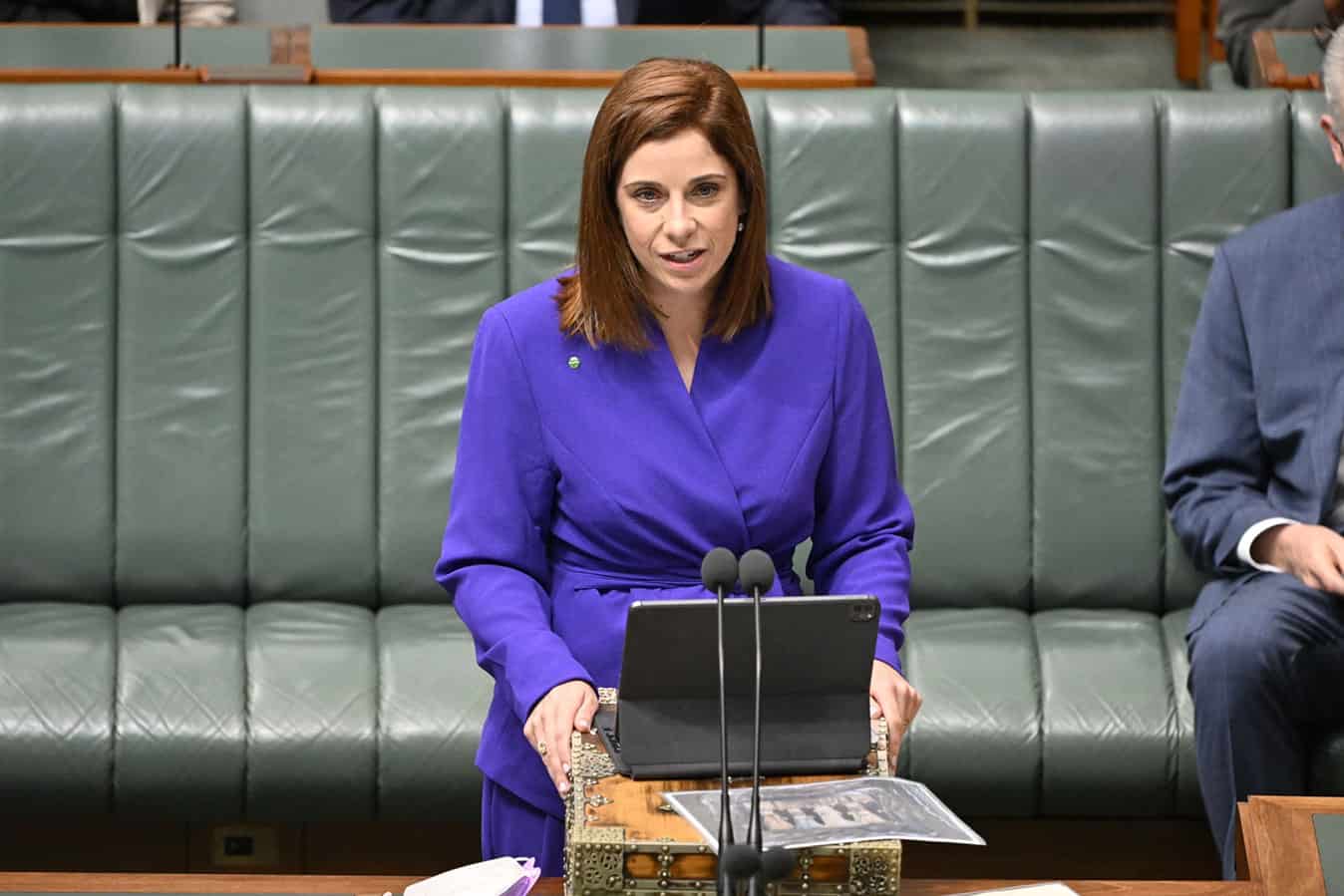“How our nation provides for the final years of a citizen’s life is worthy not only of dedication and dollars but of ambition,” declared Aged Care Minister Anika Wells, in laying out her vision for a better system for older Australians during a National Press Club address in Canberra on Wednesday.
Delivering the first ever speech by an Aged Care Minister at the National Press Club, Ms Wells detailed the Albanese Government’s ongoing efforts to fix the aged care crisis, which the historic Aged Care Royal Commission characterised by a single word – neglect.
“For these past twelve months I’ve felt the best we could do as a new Government was to triage a crisis even worse than we feared,” she said.
Outlining ambitions to bring “aged care back from the brink”, Minister Wells recapped the Government’s progress since coming into power and, critically, its commitment to embracing a new era where all Australians receive safe, quality care later in life. But it will take time, she admitted.
“Like so many things neglected for so long, this will take time to deliver a system of care we all deserve.”
Tracing back over the age care system’s history, Minister Wells highlighted the then Howard Government’s introduction of the Aged Care Act 1997, which sets out aged care providers’ obligations and responsibilities on how they run their services. As part of its reforms, the Government is seeking to introduce a new Aged Care Act in 2024.
“While critically important, this focus lost sight of the rights of older people,” she argued.
“The Royal Commission describes a need for a clear statement that the care provided to residents is safe and of a high quality. This should be the centre of everything we do.”
Minister Wells said after inheriting a system on the brink and at the cusp of another COVID winter, the Government took urgent action to start reforms, embarking on more than 100 reform projects within the past 12 months, guided by the Royal Commission.
Some of the biggest include extending the Serious Incident Response Scheme to in-home care to make all care recipients safer, introducing six new quality indicators for residential aged care services to drive quality improvements, creating Aged Care Labour Agreements, fee free TAFE places and pathways, and keeping student visas for aged care, she said.
Equally, the Minister pointed to some of the Government’s “proudest achievements”, including Star Ratings, care minutes increases, wage increases for workers, funded as part of a $36 billion budget package, and legislation for a registered nurse on site 24/7, set to come into effect from July.
“On some of these measures we are flying – lifting a standard quicker than we could have hoped,” Ms Wells said.
“On some measures we fall short. We learn the lessons. We try again.”
Unveiling the second aged care Quarterly Financial Snapshot, from October to December 2022, which provides the first insight under the new AN-ACC funding model introduced, Ms Wells revealed that by the end of December, the number of providers making a loss dropped from 66% to 54%, proving that “our reforms are making a tangible difference to providers”.
“The latest data shows residential aged care providers delivered an improved average of 189 minutes of care per resident, per day, moving closer towards the sector average of 200 care minutes which becomes mandatory from 1 October 2023,” she added.
Minister Wells suggested other strong improvements contributing to safety and quality could be seen through Star Ratings reforms, launched last December, and new Aged Care Quality Standards that require aged care providers to ensure all workers are regularly trained in caring for people with dementia.
To help Australians navigate the changes across aged care, Minister Wells also released the Government’s Aged Care Reform Roadmap. It shows key activities from October 2022 to July 2025, including publishing financial information from residential aged care providers on the My Aged Care Website and aged care providers needing to deliver 215 care minutes per resident per day, with 44 minutes of registered nurse time, from 1 October 2024.
Ms Wells made another key announcement, unveiling Terms of Reference and members of the Government’s new Aged Care Taskforce, established to review funding arrangements for aged care, and develop options for a system that is fair and equitable for all Australians. Comprising experts in economics, finance, public policy, aged care, and consumer advocacy, it will also include strong union representation.
In the face of looming Baby Boomers, and an ageing workforce, the time for action is now, she stressed.
“We must be innovative to address this challenge and we need a funding model that is sustainable.
“We are going to need a fair and equitable system to meet the needs of Baby Boomers who, with their numbers and determination to solve problems, have shaken every single system they’ve come across. They rightfully believe aged care can offer much more than it has.
“We know that those people choosing residential care is trending down as the desire to stay and age at home trends upwards.
“It is why we must re-evaluate the funding going into a system asking for more funding.”
Above all, Minister Wells said addressing aged care reform meant fixing its biggest issue – workforce shortages.
“The aged care crisis we inherited truly required a year of urgent triage,” she said.
“Twelve months on, we are tracking tangible, substantial progress. We are bringing aged care back from the brink – and it’s about damned time.”








